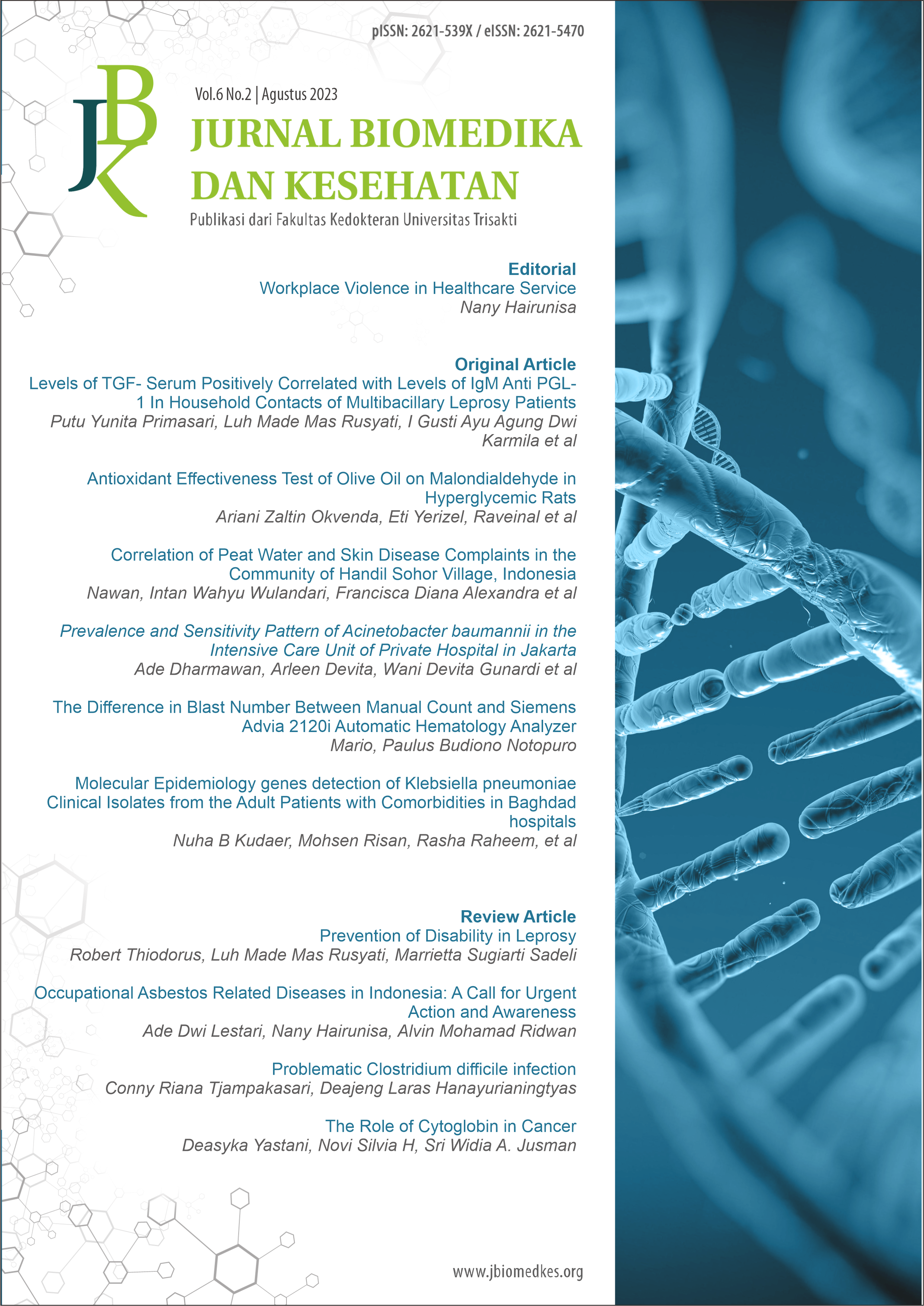Prevention of Disability in Leprosy
DOI:
https://doi.org/10.18051/JBiomedKes.2023.v6.216-223Keywords:
Leprosy, Disability, PreventionAbstract
Leprosy, a chronic granulomatous infectious disease caused by Mycobacterium Leprae, presents a
complex challenge with profound social, physical, and economic implications. The burden of
leprosy is a persistent concern in many developing countries, despite substantial control efforts.
The World Health Organization (WHO) initiated the "Global Leprosy Strategy 2016-2020" to
combat this issue, focusing on reducing children diagnosed with leprosy, eliminating visible
deformities, and enacting anti-discrimination laws. Disability in leprosy is multifaceted and
preventing disability in leprosy is a critical endeavor, such as prophylaxis, early diagnosis, and
comprehensive care strategies. Vaccination with the BCG vaccine provides moderate protection,
and combining it with single-dose rifampicin (SDR) can enhance its effectiveness, particularly for
lepromatous cases with delayed diagnoses. Improved training for healthcare providers can
facilitate early detection, reducing the risk of disability. After effective leprosy treatment, long
term morbidity remains a concern. Continued education of healthcare workers and communities is
pivotal in preventing damage to hands, feet, and eyes, especially in cases of peripheral
neuropathy. Disability progression is a substantial risk, highlighting the need for ongoing medical
assessments, even post-MDT treatment. Restructuring primary care services to ensure quality
post-treatment care is essential. Stigma remains a significant obstacle in leprosy prevention.
Community awareness and stigma reduction can motivate individuals to seek treatment.
Epidemiological patterns transmission within households, play a crucial role in identifying new
cases. Routine examinations of household contacts of leprosy patients can expedite early
diagnosis. Nutrition also plays a role in leprosy prevention. Ensuring access to nutritious food is
critical to reducing the risk of developing the disease. In conclusion, the prevention of disability in
leprosy is a multifaceted endeavor that demands comprehensive strategies, early intervention,
awareness, and community engagement. Addressing this issue is vital for improving the quality of
life for individuals affected by leprosy and for achieving a leprosy-free world.
Downloads

Downloads
Published
How to Cite
Issue
Section
License
Copyright (c) 2023 Luh Made Mas Rusyati, Robert Thiodorus, Marrietta Sugiarti Sadeli

This work is licensed under a Creative Commons Attribution-NonCommercial 4.0 International License.
The journal allow the authors to hold the copyright without restrictions and allow the authors to retain publishing rights without restrictions.
